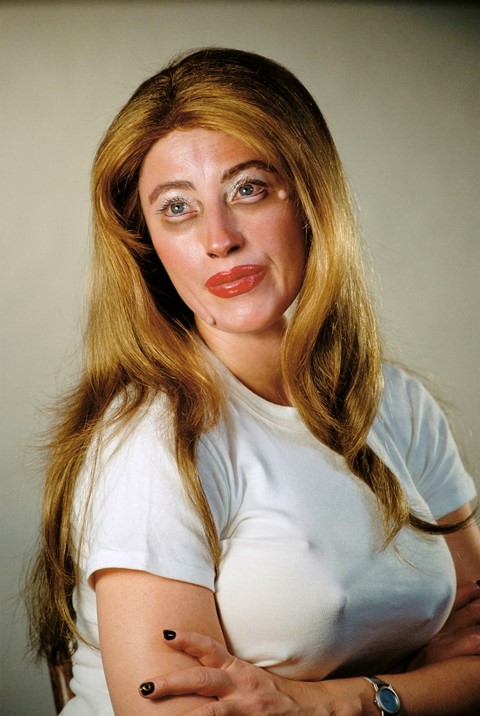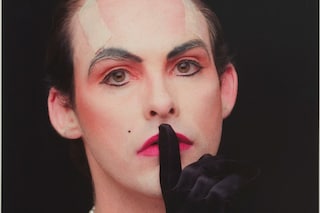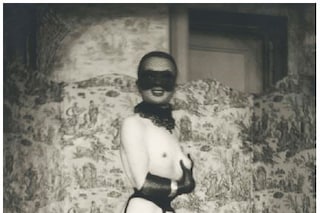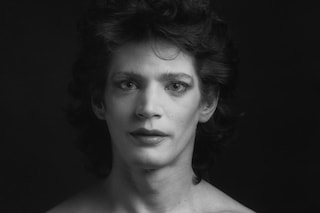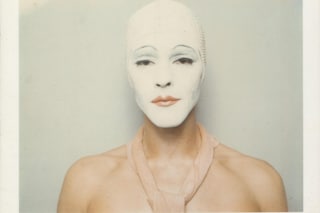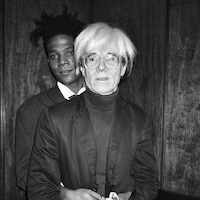For Victoria Sin, Robert Mapplethorpe, Cindy Sherman, Ulay and more, drag is a powerful act of resistance against race, class and gender constructs
Drag is one of the world’s greatest forms of escapism because of its capabilities in transcending identity beyond reality – in this realm, artists can become whoever they desire to be. With the use of excessive visual markers, performers break free from the social constructs that oppress them.
Tracing how this freedom has existed as an art form across history is London’s Hayward Gallery with their upcoming show, Drag: Self Portraits and Body Politics that will run from August 22–October 14. Through a lens of artist self-portraits from the early 1920s–today, the show explores how drag is an act of rebellion that goes far beyond its perception as an act of gender performativity. While drag is an essential act for driving the future of gender forward, its capabilities go far beyond this.
Through the works of Ana Mendieta, Robert Mapplethorpe, Victoria Sin, Cindy Sherman, Samuel Fosso, and more, the Hayward’s Drag show reveals that drag resists all social constructs – race, class and sexuality included. “Drag is an act of resistance that emerged from systems of oppression,” explains the Hayward Gallery’s senior curator Vincent Honoré. “Drag performances, as seen in visual arts, resist binary systems and norms, challenge oppressive structures, and echo social changes: in the exhibition, drag and the way it is used reflects on societal debates including feminism, civil rights, gay rights, Aids crisis, anti-consumerism, and post-colonialism.”
“Drag performances, as seen in visual arts, resist binary systems and norms, challenge oppressive structures, and echo social changes” – Vincent Honoré
The show arrives at a time when drag, through the likes of RuPaul’s Drag Race, has entered deep into public consciousness as queer communities use performance as a form of freedom. Because drag will always be an inherently queer art form, it's important to acknowledge that straight artists in the show aren’t fetishising drag, but rather exploring its wider capabilities. “Communities who are often oppressed and exploited sometimes turn to drag to counteract and invent a coping mechanism resistance,” explains Honoré. “This is clearly demonstrated in the 1991 documentary by Jennie Livingston Paris is Burning. The exhibition focuses on drag defined as a political performance, debunking social codifications, and it steers away from portraying drag as performing for the sake of performing. I spoke a lot with DRAG performers and drag communities whilst curating the exhibition, in order to reflect the polysemy of voices and to understand the multiple issues they approach and face through their art form.”
In celebration of the show, here are eight artists who used or are using drag to progress the world:
PIERRE MOLINIER, PHOTOGRAPHER
While French artist Pierre Molinier began his career as a Fauvist-Impressionist painter in the 1920s, by the late 1950s, the founder of surrealism, André Breton. had dubbed him the ‘magician of erotic art.’ But just how did Molinier turn from a painter reenacting scenes of nature, to an artist whose work was so powerfully stimulating it awarded him such a title?
After World War II, Molinier started to use cross-dressing as a form of performance, where he would dress in his then wife’s clothes to produce absurdist style, fetishistic self-portraits. Even though Molinier would adorn himself with markers of femininity – from fishnets to makeup and high heels – in most of his sepia-washed self-portraits, his genitals nearly always appear, as he participated in sadomasochistic acts. In this sense, Molinier entirely disrupts both conventional gender norms, and traditional ideals of cross-dressing previously famed by the underground of the Parisian cabaret: he was using drag to champion androgyny. In the late 60s, Molinier started to make work where he would become the central female figure in images heavily focussed on his foot fetish. He also took great pleasure in having sex with a dildo in his images, especially ones he submitted to the 1965 surrealist show. In an era of deep homophobia (including Breton abandoning Molinier when he discovered the eroticist was gay), the overt fetishism of Molinier’s gender performativity was the artist’s only form of escapism.
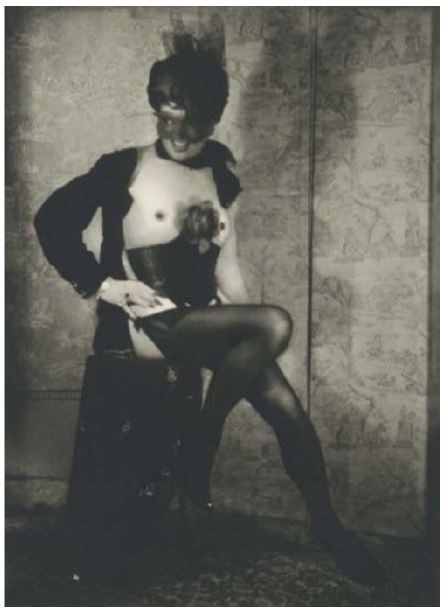
ANA MENDIETA, PERFORMANCE ARTIST
When second-wave feminism hit the United States in the late 1960s, female artists started using their bodies as a canvas to advocate for equality. However, this usually happened within a very white, upper-class frame. As a Cuban exile, Ana Mendieta vowed to use her body as a way to include diverse identities into the female gaze. The sheer complexity in the way she performed body modification (from earth art, to blood, and body modification) was the artist’s testament that being a woman was complex, and that it went far beyond biology. “Untitled (Facial Hair Transplants)” (1972) was one of the first times Mendieta used her body as a canvas. While studying at the University of Iowa, Mendieta asked a classmate to cut off his beard and then she transferred the clippings to her face, making fake facial hair. In this work, Mendieta uses hair as a symbol to deconstruct societal expectations of the way both men and women are meant to look and behave. With this work, Mendieta became one of the first artists to play with the transformative abilities of hair, and to explore hair’s association to gender.
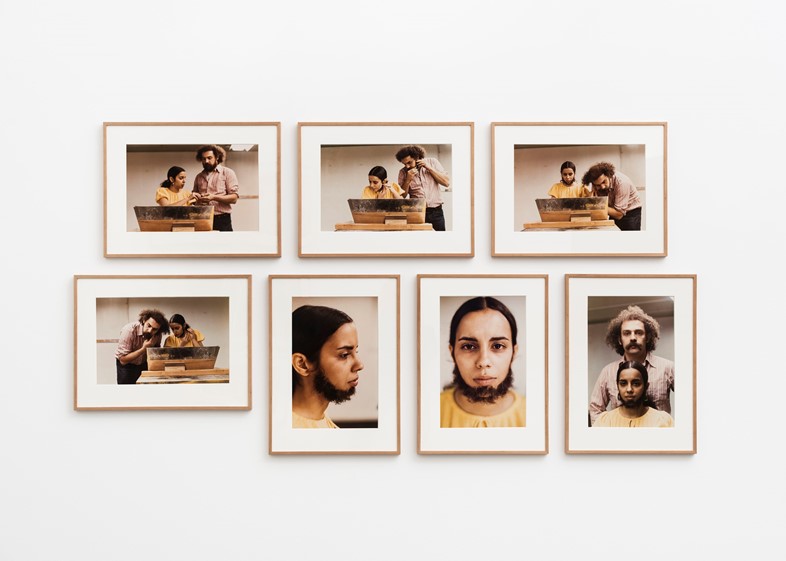
VICTORIA SIN, DRAG QUEEN
With the rise of drag and popular culture, drag as performance is easily synonymous with men, but Victoria Sin is a drag queen breaking down that stereotype. Their interest in drag first peaked at age 17 when they worked at a restaurant in their home country, Canada. “All the wait staff were gay,” Sin told The Guardian. “I knew I was gay, but I never had any window into gay culture. Every Wednesday and Sunday there were drag shows at this one bar we went to, and it was my first close encounter with drag. I became really obsessed with it.” Since then, Sin has paved the way for drag as an act of rebellion against gender binaries, rather than one tied down by gender. “What’s important to make clear is that, for me, drag is not performing a woman, drag is performing femininity. A person can be a woman and not be at all feminine,” says Sin. In addition, Honoré explains that, “In performances, films and text, Victoria Sin explores how images of ideal feminine identities (from Hollywood stars to cartoon characters) are produced, performed and imposed. Deconstructing these ideal images, Sin argues for a non-binary and post-colonial alternative, and asserts that ‘gender is something that can be played with rather than something to measure people against’”.
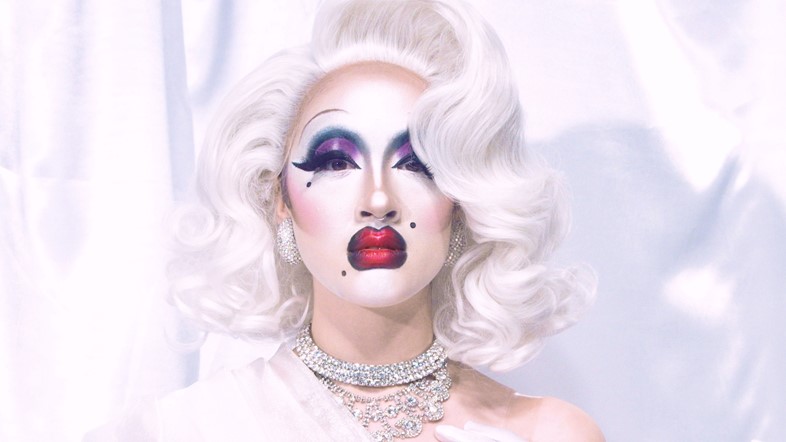
ULAY, PERFORMANCE ARTIST
“In 1970, Ulay used Polaroid film to create a series of self-portraits or, as he termed them, ‘auto-portraits’,” explains Honoré. “Through these rarely seen ‘auto-portraits’ the artist was able to engage with the complex question of his own identity.” This is certainly the case with one of the German artist’s most well known polaroid series Renais Sense (1974) – which features multiple images of Ulay dressed in different personas using white make-up. In the book In Whispers: Ulay on Ulay (a comprehensive guide on the artist), it’s said that Ulay’s erotic experiences lead him to an illumination where he understood that, in moments of eroticism, a person becomes liberated of the bond with the self to generate a mode of equilibrium. This is translated into Renais Sense, where Ulay divorces all real ties to himself to explore different facets of his identity. This equilibrium is equally translated into his 1973 work “S’He”, where the image is divided equally between Ulay’s feminine and masculine traits. His then girlfriend, Paula Francoise-Piso (the relationship that was the prelude to Marina Abramović), was the muse for the piece where Ulay’s face appears to be split in two: one half painted in drag-esque make-up, and the other without.
This piece is said to have set the tone for Ulay’s pursuit of unity – one that persisted throughout his romantic and artistic relationship with Abramović.
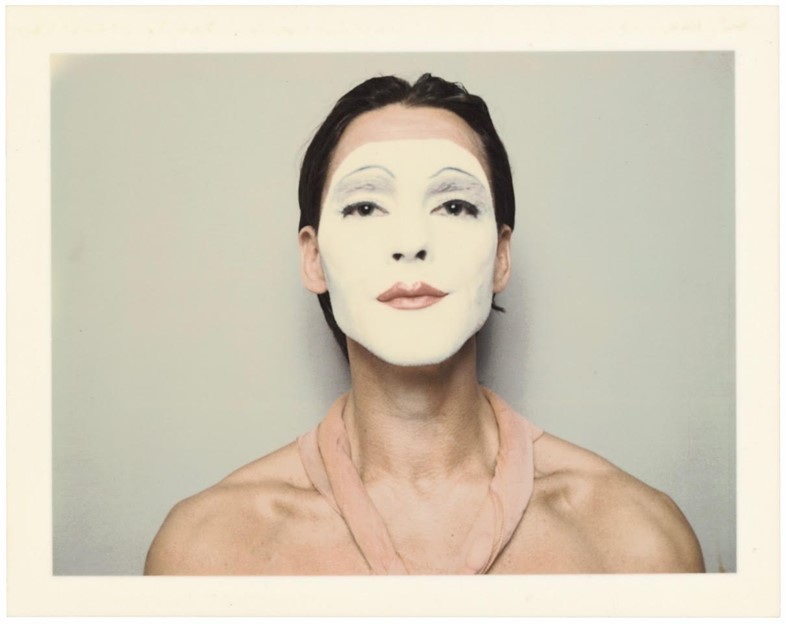
ROBERT MAPPLETHORPE, PHOTOGRAPHER
In the 1980s, American photographer Robert Mapplethorpe released a set of self-portraits that used performativity to explore social constructs. “self-portrait” (1980) featured the artist in two images, one where he wears feminine style make-up, and another where he is dressed in a leather jacket with his hair slicked back in his synonymous black and white (an aesthetic used to explore binaries that aren’t illuminated in colour). The dichotomy of the fiercely feminine with the overtly masculine archetype shows an artist at play with different sides of his identity, while also alluding to how socially constructed gender is. A third self-portrait from 1980 shows Mapplethorpe recreating artist Marcel DuChamp’s female alter-ego, Rrose Sélavy, as Mapplethorpe appears in women’s makeup, wrapped in a fur collar.
Continuing Mapplethorpe’s use of drag performativity as social critique is a self-portrait from 1983 where the photographer recreates a 1974 photo of newspaper heiress Patty Hearst holding a rifle with the symbol of the Symbionese Liberation Army behind her. Mapplethorpe reenacts the image by posing in a leather jacket with the gun in front of a five-pointed star pentagram – a symbol with deep occult associations. Here, Mapplethorpe is seen to be making a commentary on religion by using photography to celebrate his sinful behaviour against a figure of religious notoriety.
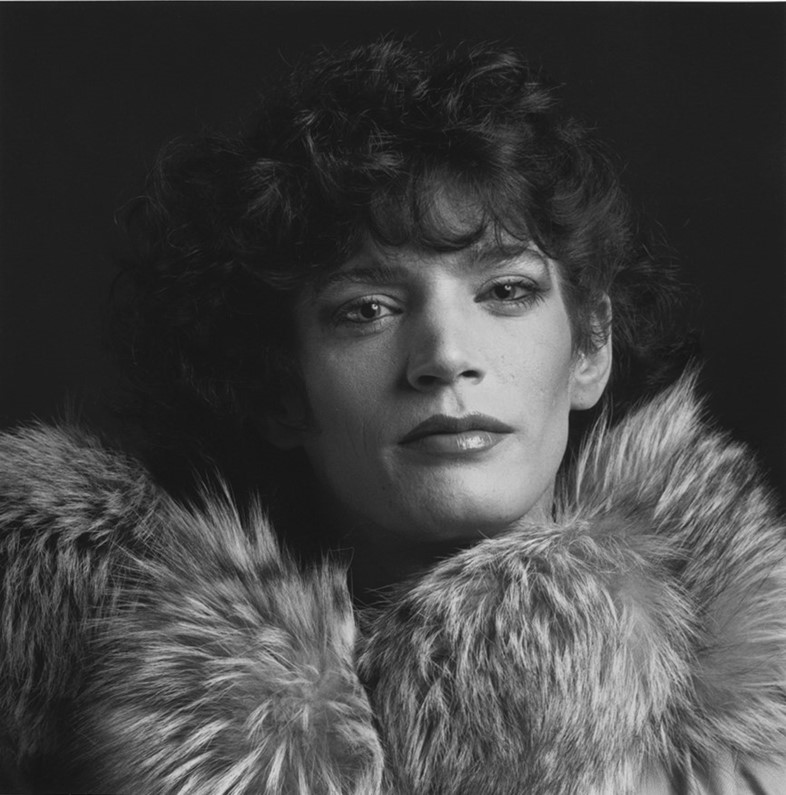
SAMUEL FOSSO, PHOTOGRAPHER
For African photographer Samuel Fosso, drag is a way to break down the barriers of systematic racial oppression. Fosso starting taking photos at age 13 after he fled Nigeria’s civil war. Once settled in the Central African Republic, he started taking wedding portraits and using left-over frames to take self-portraits to send to his grandmother. "I wanted to show how good I look. That's what it was about,“ Fosso told ArtMag. Within his earliest images, Fosso addresses western colonialism and fashion by mimicking images he saw on album covers where singers wore bell bottoms and tight shirts.
Now nicknamed the ‘man of a thousand faces’, Fosso’s oeuvre has since filled with images of the photographer taking on different personas as a form of social commentary. When recreating figures of power, Fosso uses drag to observe the ways in which visual markers such as clothing and make-up symbolise power and the contexts where this power came from. For example, DRAG: Self-portraits and Body Politics features Fosso’s series African Spirits (2008), in which, “Fosso reenacts historical portraits of African Independence and Civil Rights figures, one of which portrays American political activist Angela Davis,” as Honoré explains.
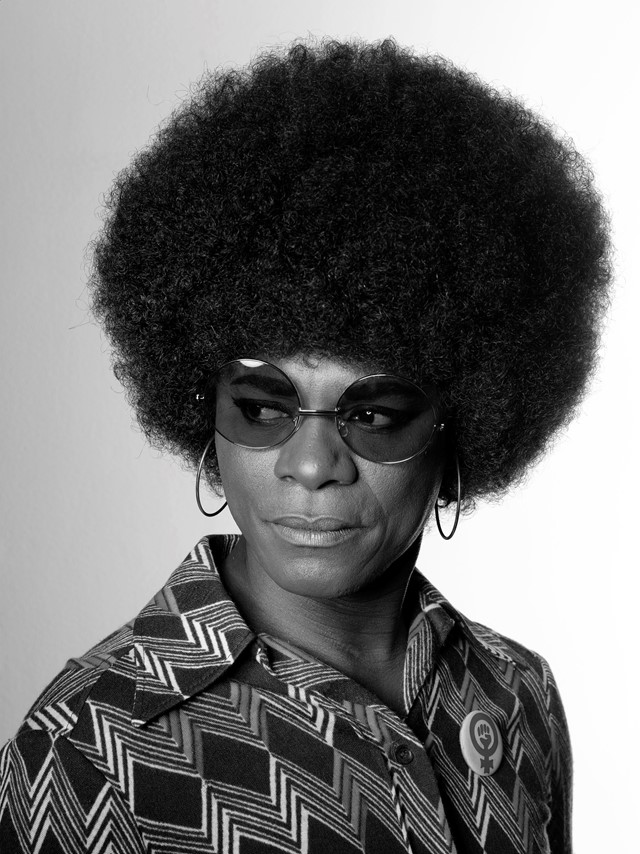
DAVID WOJNAROWICZ, AIDS ACTIVIST AND MULTIDISCIPLINARY ARTIST
To one of America’s boldest Aids activist and multidisciplinary artist, David Wojnarowicz, drag queens are true revolutionaries who disrupt the visual codes of gender. This is seen with the show’s inclusion of one of the artist’s last films, Beautiful People (1987). Honoré explains that “The film follows Wojnarowicz’s bandmate Jesse Hultberg, (they both played in the band 3 Teens 4 Kill), as he makes himself up, leaves the city and disappears – fully clothed – into a lake.” Like all of Wojnarowicz’ work, the political is deeply personal in this film as it projects the way in which drag is inherently queer, and the way in which drag artists were affected by Aids at the time. “Wojnarowicz meant this piece to represent a tragic metaphor for the Aids crisis, for the solitude of those who were dying at the time with no social of family support,” reveals Honoré. “This work was created while its author was himself dying from the consequences of Aids.”
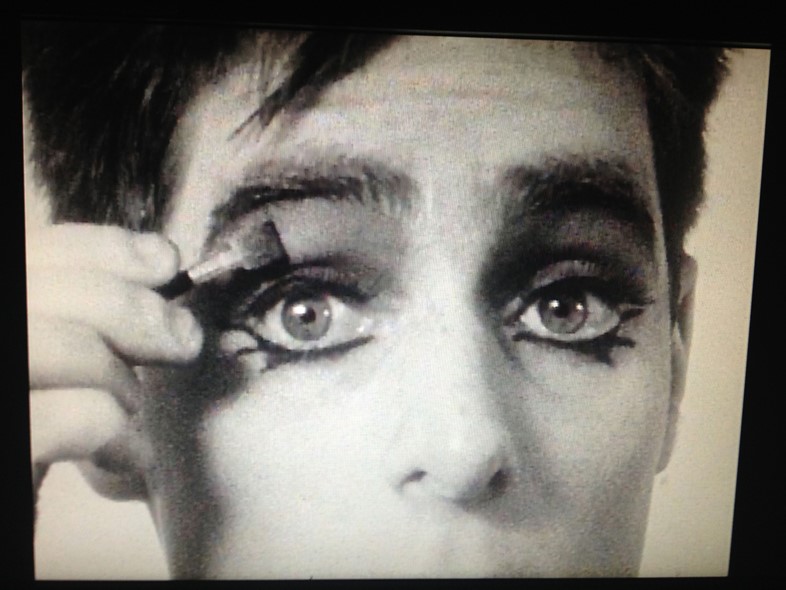
CINDY SHERMAN, PHOTOGRAPHER
Much like Mendieta, American artist, Cindy Sherman’s career uses her body as a canvas for social commentary. Somewhere between Mendieta and Fosso, Sherman’s oeuvre brings hundreds and hundreds of new personas to life as a way for the artist to both explore her own identity and her social and political contexts as a female artist. Her earliest photo series, Untitled Film Stills (1977–80), was pivotal in the artist’s shift from painting to photography. In these, Sherman assumes different female archetypes found in film between the 1950s-60s in order to challenge stereotypical views of women which the film industry had (and has) a tendency of exploiting. The series took Sherman three years to shoot and consists of 70 black-and-white images, in which we find her assuming everything from the domesticated sex goddess to the hypersexualised ‘bombshell’.
Among the myriad of roles, Sherman’s use of markers of femininity in an excessive amount of images parody the way imagery was used to force unrealistic visual expectations on women. Equally, the series also explores how women are endlessly misrepresented. Over 20 years later, the artist also used drag to tackle the imposition of beauty standards on women in her 2000-02 Headshot series, which is featured in the show. “For the first time in her career, she explored the process and effects of ageing, and the dramatic clichés imposed by society on women,” says Honoré.
Drag: Self Portraits and Body Politics will run from August 22–October 14. You can find out more here
